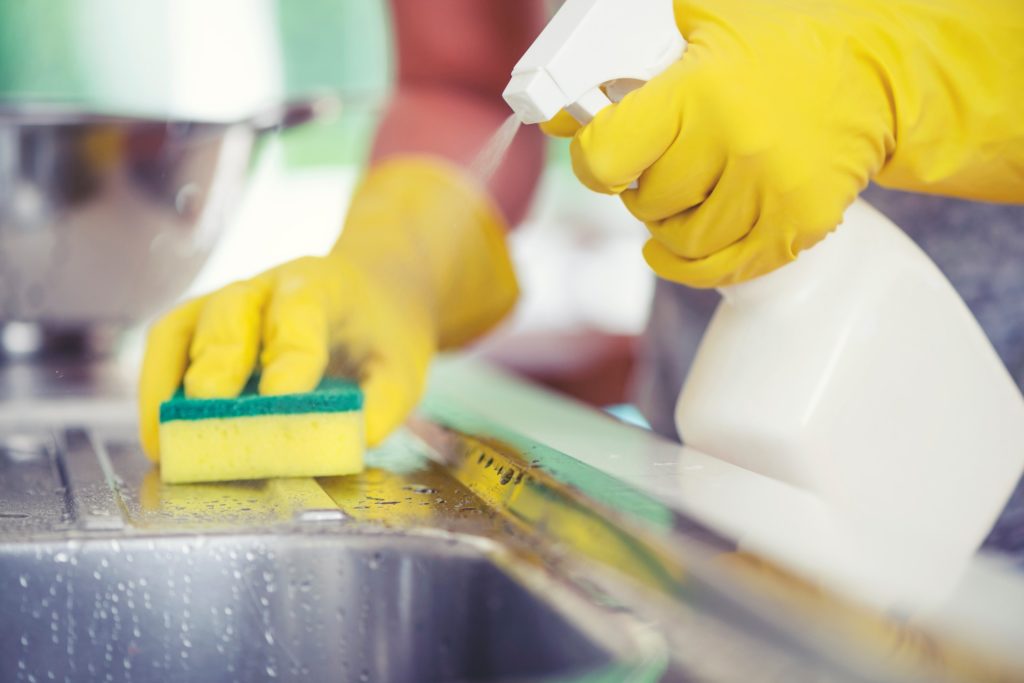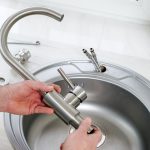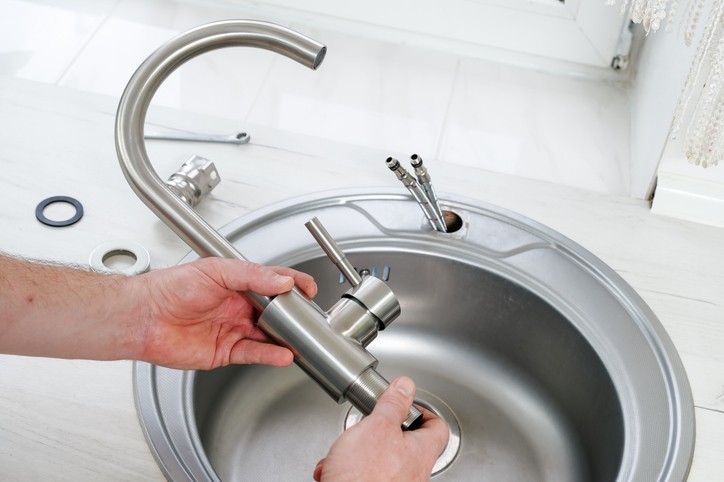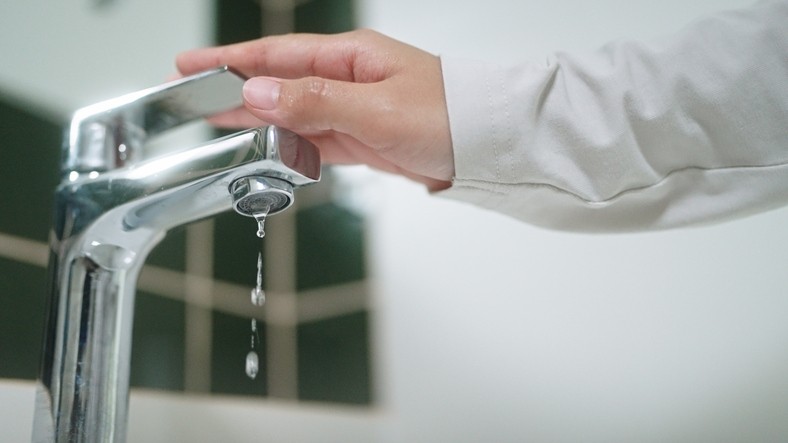You step kitchen and get a whiff of a foul odor. You immediately check the fridge for leftovers gone bad – no luck. You check the trash – nothing. Perhaps your playful pup stashed a piece of food somewhere. Nope, not that either. You finally follow your nose to the kitchen sink, and boom! – stink central!
When food debris gest stuck in your kitchen sink’s plumbing system, it can quickly result in a less-than-pleasant odor. Here’s how to banish kitchen sink stink it and prevent it from coming back.

Deep Clean the Sink
Food residue can often get stuck on the sides and base of the sink, especially after dishes have been left sitting too long. Once all the dishes are cleared out, insert the sink stopper into the drain and fill the basin with hot water. Add one teaspoon of dish soap and swirl the water around until the soap dissolves. Let it sit for at least 15 minutes to break you food residue and grime. Then, use a soft bristle brush or sponge to scrub the sides and bottom of the sink and loosen stuck-on food. Finally, remove the stopper and turn on the garbage disposal to flush debris down the drain and rinse with clean water.
Scour the Drain
Boil a tea kettle or pot of water and set it aside. Pour one cup of baking soda into the sink drain and follow with one cup of white vinegar. Letting the mixture effervesce for 10 to 15 minutes, then slowly and carefully pour the hot water into the drain. Turn on the cold water to thoroughly rinse the drain for one minute. The combination of baking soda, vinegar, and hot water scours the walls of the sink drain and removes any lingering odors.
Clean the Flange
The sink flange, located at the top of the garbage disposal where it meets the sink drain, can get filled with food debris and gunk. Over time, it can become difficult to rinse away. To clean the flange, unplug the garbage disposal and squeeze a few drops of liquid dish soap onto a dish scrubbing wand. Wet the bristles with water and lower the wand into the drain, scrubbing the top of the sink flange thoroughly. Turn on the cold water and run it for one minute to flush out loose residue.
Sanitize the Disposal
Garbage disposal blades and the impeller plate have the important job of grinding away at food. Over time, food residue can accumulate on the blades and plate, leading to a foul odor. To clean and sanitize, drop 2 to 3 cups of ice cubes and one cup of table salt into the drain. Turn on the cold water tap, then turn on the garbage disposal and run it until the ice has been completely crushed.
Deodorize the Garbage Disposal
Remove stuck on food from the walls of the disposal and freshen the sink with the power of citrus. Drop five lemon, lime, or orange peels into the sink drain, turn on the disposal, and grind the peels for at least 30 seconds. The grinding releases acid from the peels to deodorize the drain.
Clear the Drainpipe
If the above tips don’t work, food debris might have congealed and settled into the drainpipe. To clear the pipe and get rid of lingering odor, you’ll likely need to open the plumbing pipe through the P-trap beneath the sink. If this is beyond DIY skills, contact a licensed plumber for assistance.
Prevent Future Odors
First and foremost, avoid leaving dirty dishes to pile up in the sink. Scrape food scraps into the trash, especially if you don’t have a garbage disposal. If you do have a disposal, be careful what you toss in it. For example, starchy and stringy food should always go in the trash or compost bin. Run cold water for 30 seconds before and after turning on the disposal to flush any food debris through the drain. Deodorize and sanitize the sink, drain, and disposal regularly to keep noxious odors from coming back.
How can Norhio Plumbing help? As our complete home plumbing experts, we offer repairs, routine maintenance, and expert installation of all plumbing systems and fixtures. For high-quality plumbing services that will exceed your expectations, contact Norhio Plumbing today.










Leave a Reply